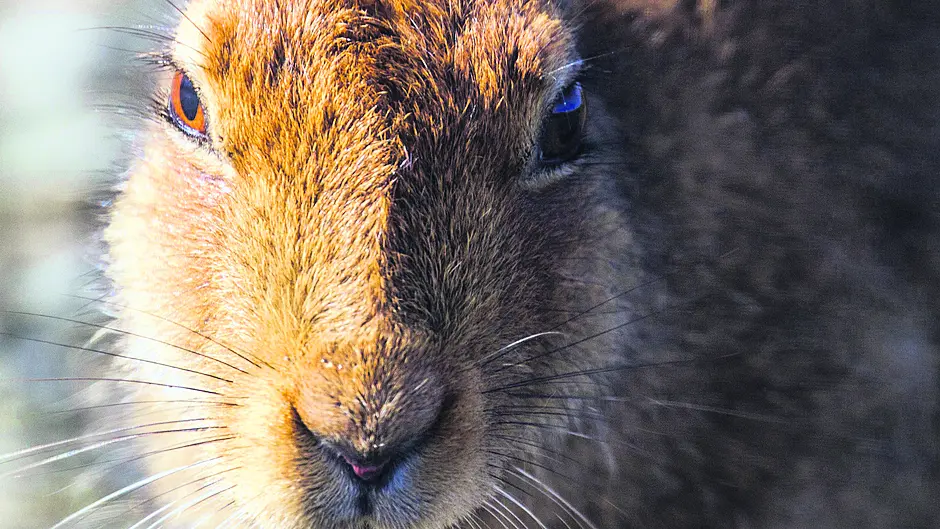Wildlife with an amateur observer
For the last few weeks, this column has travelled back over millennia to explore the wildlife landscape of Ice Age Cork. On this, our final journey to that era, we look at some of the mammals that once populated this land we now call Ireland. And, believe it or not, some of these extraordinary species still live here.
One in every four mammals on this earth is a rodent and they account for over 40% of all mammalian species that exist today. So we are well familiar with these common animals, renowned for their strong jaws and self-sharpening teeth.
However, a rodent that does not come to mind as Irish fauna is the lemming, nonetheless this small animal was once a key species in Ice Age Cork. Its closest relative living in West Cork today is the bank vole, but this small creature is actually a blow in, believed to have ‘hitched a ride’ here with equipment shipped from Germany during the great electrification project of the 1920s.
Belying its rather cute appearance, the lemming is a fierce creature compared to the gentle bank vole. When cornered, a lemming can take on an animal many times its size and there are numerous reports of these small rodents attacking sled dogs in the Artic region.
There were once two species living in Ireland – the Norway and Artic lemming.
The former species is confined to the Scandinavian countries today while the latter is found mostly in the Artic regions of Russia. Both have brownish pelts in summertime, however, in winter, the Artic variety changes its colour to white to better conceal itself in snow.
This small creature is perfectly adapted for extremely cold conditions, with its short ears, nose and tail designed for minimum heat loss. It has long claws for digging and burrowing so it can survive prolonged periods of extreme cold in its labyrinth of underground bunkers. In fact, fossil evidence suggests that these tiny animals survived here during some of the worst periods of the Ice Age while many others perished.
Like most rodent species, lemmings reproduce in huge numbers and they breed year-round, which is unusual in Polar regions. The lemmings of Ice Age Cork would therefore have provided an abundant foodstuff for some of the predators hunting in Ireland then, including hyena, Artic fox and wolves.
By now, many of you are imagining thousands of lemmings throwing themselves off the cliffs of Ice Age Cork. However, this spectre most likely did not come to pass. The belief that hordes of lemmings ‘commit suicide’ is actually a fallacy, its origin most likely a Hollywood film made in 1958 which staged this phenomenon. Lemmings do move in mass migrations when there are ‘blooms’ of over-population and they are drawn to water when they do so. So it is possible that mass drownings occurred here but not as Walt Disney imagined them. Like many other species, lemmings became extinct in Ireland as temperatures started to rise at the end of the last great Ice Age.
One of the many predators that would have feasted on lemmings in Cork was the Artic fox. A smaller species that the red fox we know today, this animal was also perfectly adapted for the freezing conditions of the Ice Age and it still thrives on the frozen Artic tundra today.
For heat retention, the Artic fox has a shorter snout and ears that today’s madra rua and its furry-soled feet also lock in heat. Its smaller size means it can burrow more effectively in snow to capture subterranean lemmings, which were its primary food source in Ireland. Like the Artic lemming, the Artic fox changes its pelt cover to a gleaming white in winter for more effective camouflage.
While the Artic fox’s primary food was lemmings, it also most likely shadowed hunting wolves and bears to scavage off the remains of their hunt. And, in summer, like the foxes we know today, they would have eaten fruit and eggs. Artic foxes slowly became extinct here as the ice melted and these strategies no longer ensured their survival.
But there are two animal species still present in Ireland today that once shared the frozen West Cork tundra with woolly mammoths, hyenas and bears – the Irish hare and stoat. These truly are ancient Irish mammals and deserve to be called Irish fauna – unlike us human ‘blow ins’.










